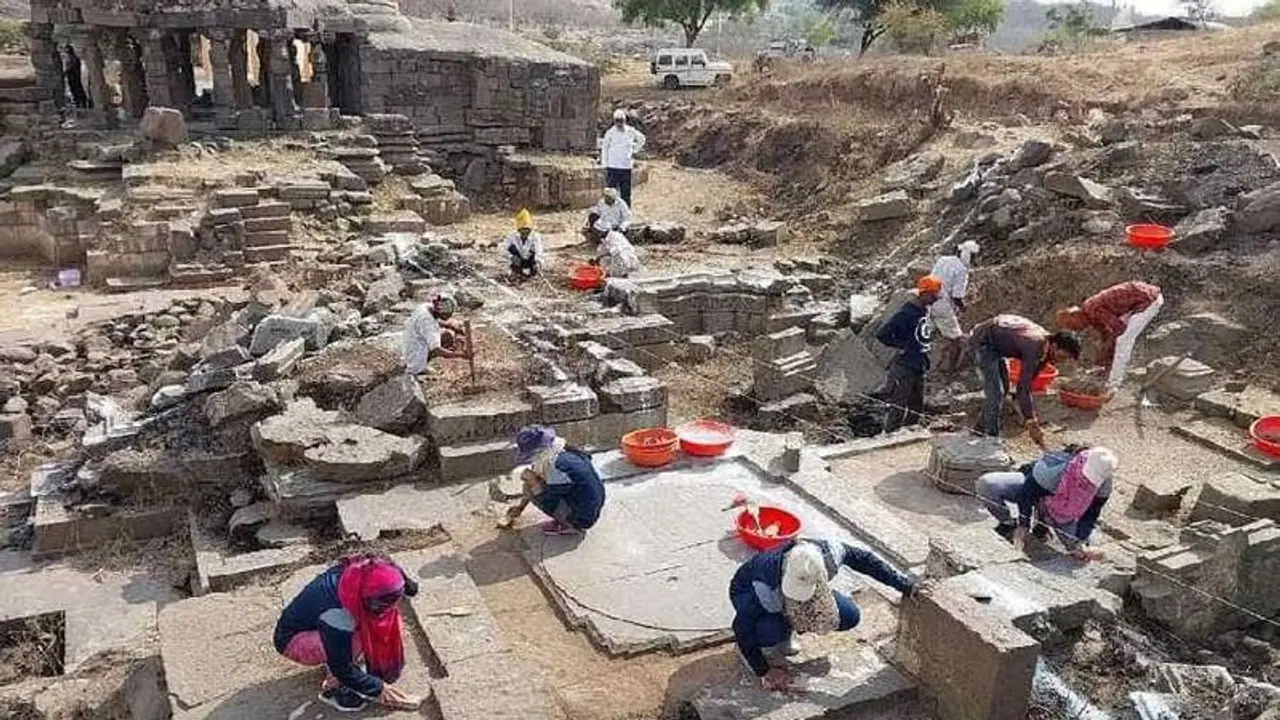Excavation at Sakaleswara temple premises near Ambajogai reveals temple bases dating back to 1228 AD, shedding light on Maharashtra's medieval heritage.
In a recent breakthrough, during an excavation at the Sakaleswara temple premises near Ambajogai in Beed district, Maharashtra, a remarkable discovery has captivated locals and experts alike. According to reports, the Archaeology department of the Maharashtra government uncovered a significant find, disclosed by an informed official. Two temple bases have been unearthed within the Sakleshwara temple premises, also recognized as the Barakhambi temple, with origins tracing back to 1228 AD. These temples were constructed by the Yadava dynasty, who ruled the Devgiri Fort, as confirmed by an inscription discovered earlier.

"The excavation commenced on March 15, with the creation of 14 trenches spanning 100 square feet each. Among the findings are the foundations of two temples, one identified as Kholeshwar, named after a Yadava general," Amot Gote, Assistant Director of State Archeology was quoted as saying in a TOI report.
The excavations have yielded fragments of bricks hinting at the existence of shikharas (towering spires) atop these temples. Additionally, sculptural elements like hands and feet have also been uncovered, adding to the significance of the discoveries.
Expanding on the project's objectives, Gote disclosed intentions to undertake a comprehensive survey of ancient monuments in Ambajogai. The overarching goal is to transform the area into a recognized 'heritage village,' thereby preserving its historical significance and cultural heritage for future generations.
Gote elaborated on the historical significance of Ambajogai, formerly referred to as Amrapur, Jayantipur, and Jogaiambe. He highlighted its rich heritage, mentioning that during the Hyderabad Nizam Era, it was known as Mominabad. Gote also pointed out the presence of several notable monuments in the region, such as Hatthikhana, Dasopant Temple, and Yogeshwari Temple, further emphasizing the area's cultural and historical importance.
The unearthing of temple bases within the Sakaleswara temple complex illuminates the area's abundant cultural and architectural heritage. These structures underscore the historical importance of Ambajogai and its environs, offering valuable glimpses into the religious and socio-political dynamics of medieval Maharashtra.
Moreover, the forthcoming survey of ancient monuments is positioned to contribute significantly to the preservation and promotion of Ambajogai's cultural heritage. Through the identification and documentation of historical sites, the initiative aims to raise awareness of the region's legacy and attract tourism, thereby fostering economic growth while preserving its historical treasures for posterity.
Consequently, the excavation at the Sakaleswara temple premises, unveiling compelling evidence of ancient temple structures, provides a window into the architectural prowess of the Yadava dynasty. As plans progress to designate Ambajogai as a heritage village and conduct a comprehensive survey of its monuments, the region is poised to emerge as a vibrant cultural center, celebrating its rich history and heritage.
